All Posts (6434)
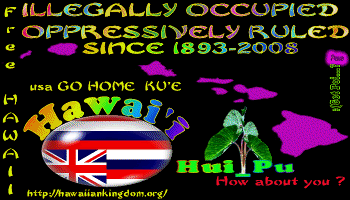 Hawaiian leaders urge delay on ceded landsBy Gordon Y.K. Pang, Honolulu Advertiser, March 17, 2008Two Native Hawaiian leaders have joined with Hawaiian activists in calling for state lawmakers to delay passing an agreement that transfers $200 million of land and cash to the Office of Hawaiian Affairs.Robin Danner, president and chief executive officer of the Council for Native Hawaiian Advancement, and Colin Kippen, executive director of the Native Hawaiian Education Council, said they want more information to be gathered before the settlement is adopted. That probably would mean putting off a decision at least until next year's Legislature convenes in January 2009.Late yesterday, the Sovereign Councils of the Hawaiian Homelands Assembly also weighed in on the subject. The organization, formerly known as the State Council of Hawaiian Homestead Association, issued a statement saying it "strongly opposes" the agreement reached between OHA and the Lingle administration. The statement said homestead association presidents gathered Saturday to discuss the issue and voted unanimously to oppose the agreement. The group echoed the arguments made by Danner and Kippen.Meanwhile, a poll conducted on OHA's behalf shows 55 percent of Hawai'i residents believe the Legislature should approve the settlement agreement while 72 percent of Native Hawaiians polled believe it should be passed.The proposed settlement is meant to resolve a 30-year dispute between Native Hawaiians and the state over who gets the income from land once owned by the Kingdom of Hawai'i.Under the terms of the agreement, OHA gets three parcels of land worth $187 million, $13 million in cash and a minimum annual payment of another $15.1 million. In exchange, OHA agrees to waive further claims to income from the so-called ceded lands from 1978 onward.OHA and the Lingle administration have lobbied hard to get the settlement passed in this session of the Legislature, pointing out that the proposed agreement took more than four years of meetings to work out.Danner and Kippen, who are usually allied with OHA on major issues, including their support for the Akaka bill for Native Hawaiian recognition, say they are not convinced this settlement is the best OHA could get."I think it's a significant decision, one that warrants us to pause — not just the Hawaiian community, but the Legislature, the state government," Danner said.Kippen, who stressed he is speaking for himself and not his organization, said, "I'm opposed to this bill basically ... because it gives up too much for too little in a way that is unfair to Native Hawaiian beneficiaries."COMMITTEES MEET TODAYOHA Administrator Clyde Namu'o and Attorney General Mark Bennett say the agreement is fair and beneficial to both sides and should be adopted.Three committees of the state Senate meet in the state Capitol auditorium at 2:45 p.m. today to consider House Bill 266, the latest version of the negotiated settlement. The Legislature must approve the deal for it to become binding.The $200 million offered in the settlement is presumed to represent the revenue generated by the ceded lands and owed, but not paid, to OHA by the state between 1978 and now.The ceded lands are made up of 1.2 million acres, or about 40 percent of the total land in Hawai'i and about 95 percent of state-controlled lands, according to OHA.A number of Hawaiians continue to believe that language in the settlement suggests the agreement could be interpreted to relinquish all future claims by anyone regarding ownership of the ceded lands.The House draft of the bill contains language that is supposed to address that concern.Kippen, a former senior counsel to the U.S. Senate Committee on Indian Affairs, former OHA deputy director and tribal judge for Indian tribes, cited language in the agreement that "waives claims of any kind" related to "income, proceeds, or any other tangible right."That could be broadly interpreted by a judge to mean the agreement settles all claims by Hawaiians to ceded lands, not just any revenues derived from them, he said."The ambiguities that are in that document are in that document forever. That language is as broad as it gets and OHA agreed to it," Kippen said.Bennett however, insists that the agreement settles only the issue of revenues."It talks about income and proceeds and that's what it's intended to do. That is what it is intended to deal with," Bennett said. "For people who are saying this bars other claims, there's no language to support that."CLARIFICATION PROMISEDOHA's Namu'o said language in the House bill clarifies that point, and added that Bennett has agreed to go even further to clarify any ambiguity."Mark is going to go on the record and will offer language to be included in the committee report that essentially says this waiver does not extinguish any claims which the Hawaiians have to ceded lands," Namu'o said.Said Bennett: "It's certainly possible that on particular language with the settlement agreement, we may work on modifying it with OHA."But even without the ambiguity, Kippen believes the agreement gives up too much."Ceded lands are from the top of the mountains ... to the submerged lands (in the sea)," Kippen said. "So let's say tomorrow ... somebody finds that there's this certain kind of limu that holds the cure to cancer or Alzheimer's, and the state now says, 'Those are growing on our ceded land, we want to sell those items, we want to make money on that.' "Hawaiians would not be able to get a share of that money because it would be income that goes to the state, Kippen said.Danner, head of the Council for Native Hawaiian Advancement, said OHA and the administration of Gov. Linda Lingle have done a good job in getting the agreement to this point. However, she said, it's now up to the Legislature to take the time to make sure it is done right.Danner said she wants the state and OHA to work on completing an inventory of all ceded lands before the agreement is finalized, a process that likely would take at least until next year."We'll all still be here next year," Danner said. "I don't think you sell the items in your house before you take an inventory of the items."Namu'o, however, said that is an irrelevant point. While it's true that OHA has not received a detailed inventory of the entire 1.2 million acres of ceded lands, it does have an inventory of all income-generation lands in that category, he said.IS $200 MILLION ENOUGH?Activist Mililani Trask, a former OHA trustee, said that since the Supreme Court's Rice v. Cayetano decision allowed for non-Hawaiians to be elected to the OHA board, its actions have been suspect.While she supports the concept of an agreement, Trask said, she still has too many questions about the current version.Trask echoed the concern of many that the $200 million amounts to too little. "We haven't been told what the $200 million is based on," she said. "How is that calculated?"A judge in 1996 said that Hawaiians were owed $1.2 billion or more for revenues derived.Namu'o, however, said that billion-dollar-plus figure was based on accumulated interest and a later court ruled that Hawaiians were not entitled to interest, only revenues themselves.The values assigned to each of the three parcels selected to be handed over to OHA are based on assessed values issued by tax offices of the individual counties.Trask said there needs to be further study. "I want to know what the environmental studies are on them (the parcels)," she said. "I think they're short-changing the people."Andre Perez of the umbrella activist group Hui Pu, said he objects to the way the agreement was handed down without any consultation with beneficiaries."The constituents and beneficiaries only found out about this agreement after it had been submitted to the Legislature," Perez said. "And now we're going to tell you what we're going to do for you. It's a very condescending and paternalistic attitude."Danner said the series of meetings OHA has held in recent weeks across the Islands is just a starting point. "There are informational meetings and then there are consultations," she said. "I just feel like we've got the cart before the horse."OHA POINTS TO POLLWhile the specter of "establishment" Hawaiians like Danner and Kippen standing side by side with activists like Trask and Perez presents a formidable opposition, OHA is countering with the poll numbers that appear to show a majority of the public, and Native Hawaiians in particular, favor the proposed settlement.Results showed 55 percent of those polled answering "yes" to the question "Do you believe the Legislature should approve the proposed settlement?" Only 26 percent of all respondents said "no" while 19 percent said they did not know.Among Hawaiians, 72 percent said "yes," 20 percent said "no," and 9 percent did not know.Asked how they felt about the agreement, 28 percent of total respondents and 27 percent of Native Hawaiians said the settlement is a good one, while 34 percent of all respondents and 62 percent of Hawaiians believed the package is too little for what OHA is owed. Only 22 percent of all respondents and 4 percent of Hawaiians said the settlement is too much.Conducted by Ward Research Feb. 15-26, the poll queried 500 people, 100 of them Native Hawaiian. The number of people polled allows a margin of error of 4.4 percent for the total population polled and 9.8 percent for Native Hawaiians.Perez said the poll didn't survey enough people to form an accurate gauge of how the public, and Native Hawaiians, feel about the settlement.Reach Gordon Y.K. Pang at gpang@honoluluadvertiser.com.Hawaiian homesteaders opposes Lingle/OHA billI AGREE WITH DA STATEMENT , BUT SCHHA Sovereign Councils of the Hawaiian Homelands , SHOULD TALK " PONO" WITH A 50% BLOOD ,usa'z GENOCIDAL PROGRAM, OVER 40,000 on da waiting list, ~HEWA~and in da SAME BOAT AS DA "IPSO FACTO" ACTING PUPPET GOVERNMENT!Hawaiian homestead group opposes Lingle/OHA billAdvertiser, March 16, 2008An organization claiming to represent 7,000 Hawaiian homestead families statewide issued a statement today opposing House Bill 266 HD2 regarding the ceded lands agreement between Gov. Linda Lingle and the Office of Hawaiian Affairs.In a news release, the Sovereign Councils of the Hawaiian Homelands Assembly, formerly known as the State Council of Hawaiian Homestead Associations, stated, "We recommend that in the interest of transparency, the Legislature require OHA and Gov. Lingle release and make public the basis of the amounts contained in the Lingle/OHA agreement."Kamaki Kanahele, SCHHA chairman, added:"Until the egregious wrongs of the past are made 'pono,' any settlement terms must be strengthened to ensure that a portion of the settlement funds are directed to the Hawaiian Home Land Trust and the Hawaiian Homes Commission Act beneficiaries, in accordance with the law."SCHHA, which claims a tie to 24 Hawaiian homestead associations, also opposes the agreement noting it lacks a ceded lands inventory and revenue report, and an unacceptable list of waivers were approved by the governor and OHA.
Hawaiian leaders urge delay on ceded landsBy Gordon Y.K. Pang, Honolulu Advertiser, March 17, 2008Two Native Hawaiian leaders have joined with Hawaiian activists in calling for state lawmakers to delay passing an agreement that transfers $200 million of land and cash to the Office of Hawaiian Affairs.Robin Danner, president and chief executive officer of the Council for Native Hawaiian Advancement, and Colin Kippen, executive director of the Native Hawaiian Education Council, said they want more information to be gathered before the settlement is adopted. That probably would mean putting off a decision at least until next year's Legislature convenes in January 2009.Late yesterday, the Sovereign Councils of the Hawaiian Homelands Assembly also weighed in on the subject. The organization, formerly known as the State Council of Hawaiian Homestead Association, issued a statement saying it "strongly opposes" the agreement reached between OHA and the Lingle administration. The statement said homestead association presidents gathered Saturday to discuss the issue and voted unanimously to oppose the agreement. The group echoed the arguments made by Danner and Kippen.Meanwhile, a poll conducted on OHA's behalf shows 55 percent of Hawai'i residents believe the Legislature should approve the settlement agreement while 72 percent of Native Hawaiians polled believe it should be passed.The proposed settlement is meant to resolve a 30-year dispute between Native Hawaiians and the state over who gets the income from land once owned by the Kingdom of Hawai'i.Under the terms of the agreement, OHA gets three parcels of land worth $187 million, $13 million in cash and a minimum annual payment of another $15.1 million. In exchange, OHA agrees to waive further claims to income from the so-called ceded lands from 1978 onward.OHA and the Lingle administration have lobbied hard to get the settlement passed in this session of the Legislature, pointing out that the proposed agreement took more than four years of meetings to work out.Danner and Kippen, who are usually allied with OHA on major issues, including their support for the Akaka bill for Native Hawaiian recognition, say they are not convinced this settlement is the best OHA could get."I think it's a significant decision, one that warrants us to pause — not just the Hawaiian community, but the Legislature, the state government," Danner said.Kippen, who stressed he is speaking for himself and not his organization, said, "I'm opposed to this bill basically ... because it gives up too much for too little in a way that is unfair to Native Hawaiian beneficiaries."COMMITTEES MEET TODAYOHA Administrator Clyde Namu'o and Attorney General Mark Bennett say the agreement is fair and beneficial to both sides and should be adopted.Three committees of the state Senate meet in the state Capitol auditorium at 2:45 p.m. today to consider House Bill 266, the latest version of the negotiated settlement. The Legislature must approve the deal for it to become binding.The $200 million offered in the settlement is presumed to represent the revenue generated by the ceded lands and owed, but not paid, to OHA by the state between 1978 and now.The ceded lands are made up of 1.2 million acres, or about 40 percent of the total land in Hawai'i and about 95 percent of state-controlled lands, according to OHA.A number of Hawaiians continue to believe that language in the settlement suggests the agreement could be interpreted to relinquish all future claims by anyone regarding ownership of the ceded lands.The House draft of the bill contains language that is supposed to address that concern.Kippen, a former senior counsel to the U.S. Senate Committee on Indian Affairs, former OHA deputy director and tribal judge for Indian tribes, cited language in the agreement that "waives claims of any kind" related to "income, proceeds, or any other tangible right."That could be broadly interpreted by a judge to mean the agreement settles all claims by Hawaiians to ceded lands, not just any revenues derived from them, he said."The ambiguities that are in that document are in that document forever. That language is as broad as it gets and OHA agreed to it," Kippen said.Bennett however, insists that the agreement settles only the issue of revenues."It talks about income and proceeds and that's what it's intended to do. That is what it is intended to deal with," Bennett said. "For people who are saying this bars other claims, there's no language to support that."CLARIFICATION PROMISEDOHA's Namu'o said language in the House bill clarifies that point, and added that Bennett has agreed to go even further to clarify any ambiguity."Mark is going to go on the record and will offer language to be included in the committee report that essentially says this waiver does not extinguish any claims which the Hawaiians have to ceded lands," Namu'o said.Said Bennett: "It's certainly possible that on particular language with the settlement agreement, we may work on modifying it with OHA."But even without the ambiguity, Kippen believes the agreement gives up too much."Ceded lands are from the top of the mountains ... to the submerged lands (in the sea)," Kippen said. "So let's say tomorrow ... somebody finds that there's this certain kind of limu that holds the cure to cancer or Alzheimer's, and the state now says, 'Those are growing on our ceded land, we want to sell those items, we want to make money on that.' "Hawaiians would not be able to get a share of that money because it would be income that goes to the state, Kippen said.Danner, head of the Council for Native Hawaiian Advancement, said OHA and the administration of Gov. Linda Lingle have done a good job in getting the agreement to this point. However, she said, it's now up to the Legislature to take the time to make sure it is done right.Danner said she wants the state and OHA to work on completing an inventory of all ceded lands before the agreement is finalized, a process that likely would take at least until next year."We'll all still be here next year," Danner said. "I don't think you sell the items in your house before you take an inventory of the items."Namu'o, however, said that is an irrelevant point. While it's true that OHA has not received a detailed inventory of the entire 1.2 million acres of ceded lands, it does have an inventory of all income-generation lands in that category, he said.IS $200 MILLION ENOUGH?Activist Mililani Trask, a former OHA trustee, said that since the Supreme Court's Rice v. Cayetano decision allowed for non-Hawaiians to be elected to the OHA board, its actions have been suspect.While she supports the concept of an agreement, Trask said, she still has too many questions about the current version.Trask echoed the concern of many that the $200 million amounts to too little. "We haven't been told what the $200 million is based on," she said. "How is that calculated?"A judge in 1996 said that Hawaiians were owed $1.2 billion or more for revenues derived.Namu'o, however, said that billion-dollar-plus figure was based on accumulated interest and a later court ruled that Hawaiians were not entitled to interest, only revenues themselves.The values assigned to each of the three parcels selected to be handed over to OHA are based on assessed values issued by tax offices of the individual counties.Trask said there needs to be further study. "I want to know what the environmental studies are on them (the parcels)," she said. "I think they're short-changing the people."Andre Perez of the umbrella activist group Hui Pu, said he objects to the way the agreement was handed down without any consultation with beneficiaries."The constituents and beneficiaries only found out about this agreement after it had been submitted to the Legislature," Perez said. "And now we're going to tell you what we're going to do for you. It's a very condescending and paternalistic attitude."Danner said the series of meetings OHA has held in recent weeks across the Islands is just a starting point. "There are informational meetings and then there are consultations," she said. "I just feel like we've got the cart before the horse."OHA POINTS TO POLLWhile the specter of "establishment" Hawaiians like Danner and Kippen standing side by side with activists like Trask and Perez presents a formidable opposition, OHA is countering with the poll numbers that appear to show a majority of the public, and Native Hawaiians in particular, favor the proposed settlement.Results showed 55 percent of those polled answering "yes" to the question "Do you believe the Legislature should approve the proposed settlement?" Only 26 percent of all respondents said "no" while 19 percent said they did not know.Among Hawaiians, 72 percent said "yes," 20 percent said "no," and 9 percent did not know.Asked how they felt about the agreement, 28 percent of total respondents and 27 percent of Native Hawaiians said the settlement is a good one, while 34 percent of all respondents and 62 percent of Hawaiians believed the package is too little for what OHA is owed. Only 22 percent of all respondents and 4 percent of Hawaiians said the settlement is too much.Conducted by Ward Research Feb. 15-26, the poll queried 500 people, 100 of them Native Hawaiian. The number of people polled allows a margin of error of 4.4 percent for the total population polled and 9.8 percent for Native Hawaiians.Perez said the poll didn't survey enough people to form an accurate gauge of how the public, and Native Hawaiians, feel about the settlement.Reach Gordon Y.K. Pang at gpang@honoluluadvertiser.com.Hawaiian homesteaders opposes Lingle/OHA billI AGREE WITH DA STATEMENT , BUT SCHHA Sovereign Councils of the Hawaiian Homelands , SHOULD TALK " PONO" WITH A 50% BLOOD ,usa'z GENOCIDAL PROGRAM, OVER 40,000 on da waiting list, ~HEWA~and in da SAME BOAT AS DA "IPSO FACTO" ACTING PUPPET GOVERNMENT!Hawaiian homestead group opposes Lingle/OHA billAdvertiser, March 16, 2008An organization claiming to represent 7,000 Hawaiian homestead families statewide issued a statement today opposing House Bill 266 HD2 regarding the ceded lands agreement between Gov. Linda Lingle and the Office of Hawaiian Affairs.In a news release, the Sovereign Councils of the Hawaiian Homelands Assembly, formerly known as the State Council of Hawaiian Homestead Associations, stated, "We recommend that in the interest of transparency, the Legislature require OHA and Gov. Lingle release and make public the basis of the amounts contained in the Lingle/OHA agreement."Kamaki Kanahele, SCHHA chairman, added:"Until the egregious wrongs of the past are made 'pono,' any settlement terms must be strengthened to ensure that a portion of the settlement funds are directed to the Hawaiian Home Land Trust and the Hawaiian Homes Commission Act beneficiaries, in accordance with the law."SCHHA, which claims a tie to 24 Hawaiian homestead associations, also opposes the agreement noting it lacks a ceded lands inventory and revenue report, and an unacceptable list of waivers were approved by the governor and OHA.


 OVER 20 MILLION HAVE BEEN SLAUGHTERED BY THE : CIA & TAX PAYERS LIKE YOU !ALL THIS IS LEADING TO A "NEW WORLD ORDER", WHERE 80% OF THE WOLRD POPULATION WILL BE EXTERMINATED ! TRUTH!BY : NATO ,UN, USA and UK, = GLOBAL CORPORATIONZ = W.A.S.P. RACIST SELECT VERY FEW !War Against The Third World Part 3
OVER 20 MILLION HAVE BEEN SLAUGHTERED BY THE : CIA & TAX PAYERS LIKE YOU !ALL THIS IS LEADING TO A "NEW WORLD ORDER", WHERE 80% OF THE WOLRD POPULATION WILL BE EXTERMINATED ! TRUTH!BY : NATO ,UN, USA and UK, = GLOBAL CORPORATIONZ = W.A.S.P. RACIST SELECT VERY FEW !War Against The Third World Part 3War stories echo an earlier winter
Former soldiers, Marines share their experiences in Iraq and Afghanistan
Grim-faced and sorrowful, former soldiers and Marines sat before an audience of several hundred yesterday in Silver Spring and shared their recollections of their service in Iraq.
The stories spilled out, sometimes haltingly, sometimes in a rush: soldiers firing indiscriminately on Iraqi vehicles, an apartment building filled with Iraqi families devastated by an American gunship. Some descriptions were agonized, some vague; others offered specific dates and locations. All were recorded and streamed live to the Web.
The four-day event, "Winter Soldier: Iraq and Afghanistan -- Eyewitness Accounts of the Occupations," is sponsored by Iraq Veterans Against the War and is expected to draw more than 200 veterans of the two wars through tomorrow. Timed for the eve of the fifth anniversary of the war's start next week, organizers hope the soldiers' accounts will galvanize public opposition.
For some of the veterans speaking yesterday, the experience was catharsis.
Former Marine Jon Turner began his presentation by ripping his service medals off his shirt and tossing them into the first row. He then narrated a series of graphic photographs showing bloody victims and destruction, bringing gasps from the audience. In a matter-of-fact voice, he described episodes in which he and fellow Marines shot people out of fear or retribution.
'I'm sorry'
"I'm sorry for the hate and destruction I've inflicted upon innocent people," Turner said. "Until people hear about what is happening in this war, it will continue."
Winter Soldier is modeled after a well-known and controversial 1971 gathering of the same name at which veterans of the Vietnam War gathered to describe alleged atrocities. John Kerry, then a young veteran, spoke at the Detroit event, which brought him to prominence. The soldiers' claims sparked lasting enmity, which resurfaced during Kerry's run for president in 2004.
The 2008 Winter Soldier will probably be no different. The event drew dozens of counter-protesters who were kept from the conference site at the National Labor College by a contingent of Montgomery County police. Although entrance to the event was limited to participants and the media, one protester managed to slip in and walked toward the stage, interrupting a speaker.
"Kerry lied while good men died, and you guys are betraying good men," the man yelled. The protester was roughly hustled from the room by several men in red knit shirts and jeans -- members of Vietnam Veterans Against the War, who are providing security for the event.
Counter-protesters
Counter-protesters outside derided the event and were deeply skeptical of the claims being made inside. "We want absolute specifics," said Harry Riley, a retired Army colonel who leads Eagles Up!. "This is too important to our nation. The credibility of our nation and the credibility of our soldiers are involved."
Riley said those making allegations against the U.S. military should have to give sworn testimony instead of speaking at an antiwar conference.
Organizers said they have sought to verify the records of all soldiers speaking, including reviewing their service records and talking to other members of units. Some soldiers had videos and photographs, which were displayed yesterday on a large screen in the auditorium.
"The ubiquitous nature of video, photo and technology really sets this apart" from the original Winter Soldier, said Jose Vasquez, an IVAW member who directed the verification process. Organizers and speakers said Winter Soldier is not meant to vilify soldiers. Instead, they said, it is aimed at changing war policy.
"These are not bad people, not criminals and not monsters," said Cliff Hicks, 23, a former 1st Armored Division soldier from Savannah, Ga., who spoke about his experiences in Iraq. "They are people being put in horrible situations, and they reacted horribly."
Allegations
A Defense Department spokesman said he had not seen the allegations raised yesterday but added that such incidents are not representative of U.S. conduct.
"When isolated allegations of misconduct have been reported, commanders have conducted comprehensive investigations to determine the facts and held individuals accountable when appropriate," Lt. Col. Mark Ballesteros said.
Yesterday's panels included two sessions on "Rules of Engagement," in which soldiers and Marines described in emotional and often graphic terms incidents in which they said unarmed and innocent civilians were killed.
Most of the stories involved Iraq, though some took place in Afghanistan.
Two former soldiers who served with the 1st Armored Division described an attack by an AC-130 "Spectre" gunship on an apartment building in southern Baghdad that they said took place Nov. 13, 2003.
"It was the most destructive thing I've seen, before or since," said Hicks, one of the soldiers.
Adam Kokesh, a student at George Washington University who served with the Marine Corps in Iraq, said Marines were often forced to make snap decisions about whether to fire on civilians.
"During the siege of Fallujah, we changed our rules of engagement more often than we changed our underwear," he said.
Click for related content |
On the screen, a photograph showed him posing next to a burned-out car in which an Iraqi man was killed after approaching a Marine checkpoint.
"At the first Winter Soldier in 1971, one of the testifiers showed a picture like this and said, 'Don't ever let your government to do this to you,' " Kokesh said. "And still the government is doing this."
At a session on shortcomings in veterans' health care, audience members sobbed as Joyce and Kevin Lucey described the suicide of their son, Marine Cpl. Jeffrey Lucey, a death they blamed on his inability to get treatment for post-traumatic stress disorder.
Mental health specialists were on hand to help speakers and audience members, and a workshop was offered on PTSD.
Those who spoke yesterday described the experience as intimidating.
"It was terrifying for me," said Steven Casey, a former 1st Armored Division specialist from Missouri who also described the AC-130 attack. "I knew somebody needed to hear it. All I wanted to do is say what I saw. I'm not accusing anyone of a crime."




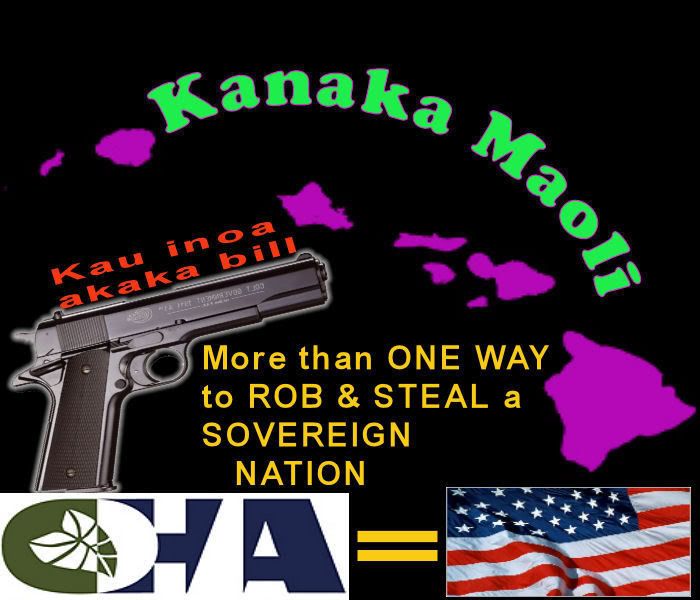
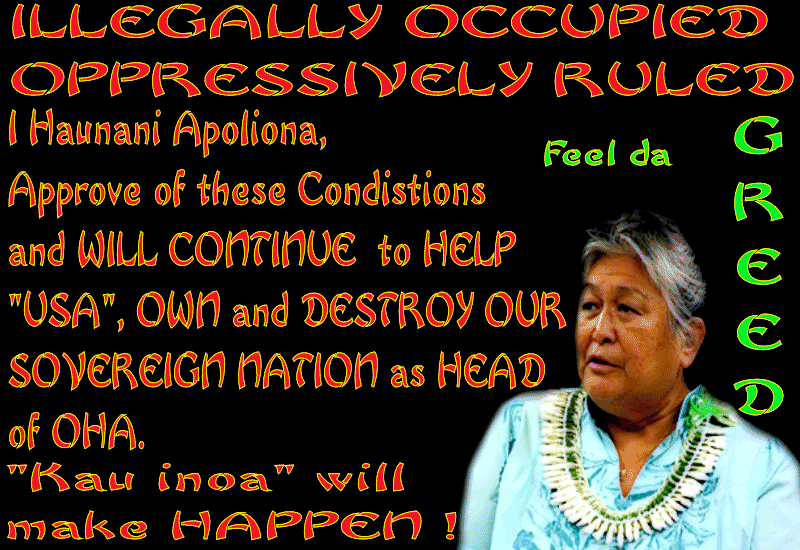
Press Conference: Stop the OHA Settlement Bill
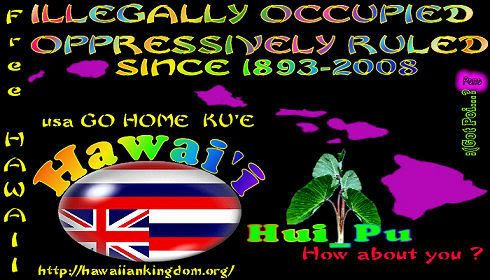
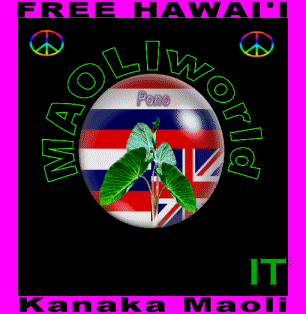
 We. Featuring the words of Arundhati Roy ..
We. Featuring the words of Arundhati Roy ..
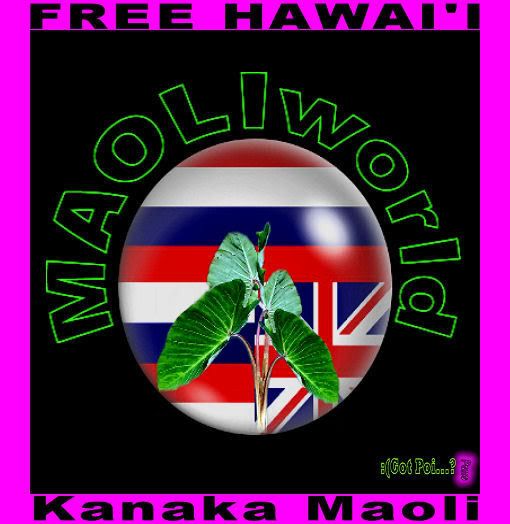
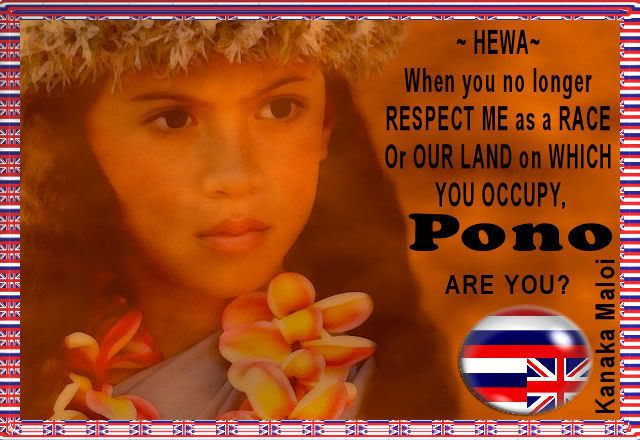
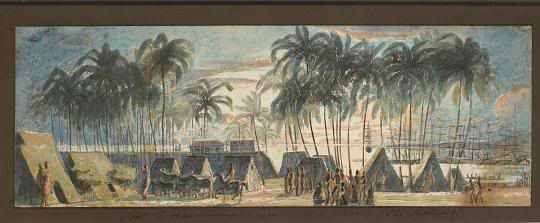


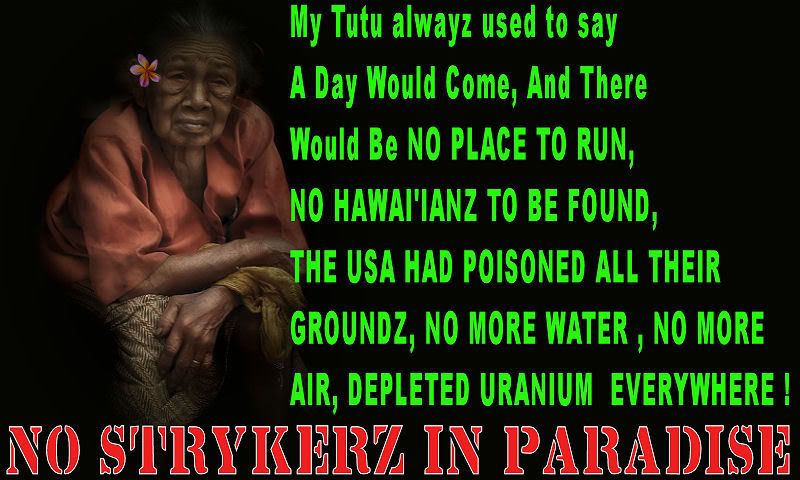 Group: Look at Stryker impact or be suedBy Audrey McAvoy, The Associated Press, Mar 14, 2008HONOLULU — An environmental group said Thursday it will challenge the Army in court if the service doesn’t address how basing a Stryker brigade in Hawaii would affect live-fire training in Makua Valley.David Henkin, an Earthjustice lawyer, said the final version of the Army’s environmental impact statement on the Stryker brigade doesn’t address how the unit would affect Makua even though Henkin submitted a question on the issue.The Army considers Makua vital to soldier readiness but Native Hawaiian groups value the remote valley for its temples and other sacred and cultural sites. Environmentalists point to several dozen endangered species that inhabit the valley.The Army doesn’t plan to have Stryker soldiers, who move around on eight-wheeled heavy duty vehicles, train in Makua. The Army only uses Makua Military Reservation for infantry brigade training.But Henkin, and several Native Hawaiian groups Earthjustice has represented in lawsuits over the Stryker brigade and Makua, say the brigade will have indirect effects on the valley.Henkin said the Army has previously indicated that basing Strykers in Hawaii would prevent the service from moving other live-fire training out of Makua.That’s because the Stryker brigade would use other Army training grounds in Hawaii — including Schofield Barracks and Pohakuloa Training Area — that could replace Makua, Henkin said.“There will be a domino effect,” Henkin said at a press conference in front of Iolani Palace. “By occupying the training lands for Stryker, they are pushing training to Makua, they are condemning Makua sacred sites and endangered species to destruction.”Earthjustice said the National Environmental Policy Act requires that the Army disclose indirect, as well as direct, environmental impacts of Stryker basing.The Army last month released the final version of its environmental impact statement, which said Hawaii’s strategic location made the state the most desirable location for the unit.Army leaders, after consulting the report, are expected to announce after March 24 where they plan to base the brigade.Col. Wayne Shanks, a U.S. Army Pacific spokesman, said the Army conducted a comprehensive study for the environmental impact statement.“The EIS was a very thorough and detailed analysis of all the potential impacts and the ways to mitigate any of those possible impacts through active measures,” Shanks said.The Army welcomes comments from the public before leaders make a basing decision, he added.Separately, the Army announced it would conduct a supplemental environmental impact statement to cover the service’s planned expansion in Hawaii and Alaska.Hawaii’s soldier population may grow by 1,000 under the plan.Overall, the Army intends to grow by 74,000 by 2010 to meet demands created by the wars in Iraq and Afghanistan. Most of increase will go to Texas, Georgia and Colorado as the Army bases six new combat brigades there.In Hawaii, the Army expects most of the additional soldiers to be assigned to Schofield Barracks. Some will go to Fort Shafter and Wheeler Army Airfield.
Group: Look at Stryker impact or be suedBy Audrey McAvoy, The Associated Press, Mar 14, 2008HONOLULU — An environmental group said Thursday it will challenge the Army in court if the service doesn’t address how basing a Stryker brigade in Hawaii would affect live-fire training in Makua Valley.David Henkin, an Earthjustice lawyer, said the final version of the Army’s environmental impact statement on the Stryker brigade doesn’t address how the unit would affect Makua even though Henkin submitted a question on the issue.The Army considers Makua vital to soldier readiness but Native Hawaiian groups value the remote valley for its temples and other sacred and cultural sites. Environmentalists point to several dozen endangered species that inhabit the valley.The Army doesn’t plan to have Stryker soldiers, who move around on eight-wheeled heavy duty vehicles, train in Makua. The Army only uses Makua Military Reservation for infantry brigade training.But Henkin, and several Native Hawaiian groups Earthjustice has represented in lawsuits over the Stryker brigade and Makua, say the brigade will have indirect effects on the valley.Henkin said the Army has previously indicated that basing Strykers in Hawaii would prevent the service from moving other live-fire training out of Makua.That’s because the Stryker brigade would use other Army training grounds in Hawaii — including Schofield Barracks and Pohakuloa Training Area — that could replace Makua, Henkin said.“There will be a domino effect,” Henkin said at a press conference in front of Iolani Palace. “By occupying the training lands for Stryker, they are pushing training to Makua, they are condemning Makua sacred sites and endangered species to destruction.”Earthjustice said the National Environmental Policy Act requires that the Army disclose indirect, as well as direct, environmental impacts of Stryker basing.The Army last month released the final version of its environmental impact statement, which said Hawaii’s strategic location made the state the most desirable location for the unit.Army leaders, after consulting the report, are expected to announce after March 24 where they plan to base the brigade.Col. Wayne Shanks, a U.S. Army Pacific spokesman, said the Army conducted a comprehensive study for the environmental impact statement.“The EIS was a very thorough and detailed analysis of all the potential impacts and the ways to mitigate any of those possible impacts through active measures,” Shanks said.The Army welcomes comments from the public before leaders make a basing decision, he added.Separately, the Army announced it would conduct a supplemental environmental impact statement to cover the service’s planned expansion in Hawaii and Alaska.Hawaii’s soldier population may grow by 1,000 under the plan.Overall, the Army intends to grow by 74,000 by 2010 to meet demands created by the wars in Iraq and Afghanistan. Most of increase will go to Texas, Georgia and Colorado as the Army bases six new combat brigades there.In Hawaii, the Army expects most of the additional soldiers to be assigned to Schofield Barracks. Some will go to Fort Shafter and Wheeler Army Airfield.
 Hawaii Senate Committee Passes Resolution on AspartameBy Stephen Fox, 3/13/2008 10:49:31 AMThere is now a Hawaii Senate Resolution authored by Sen. Suzanne Chun Oakland, which requests the Department of Health and National Academy of Sciences to review existing reports and studies related to aspartame, by funding source.It resolves that given the enormous amount of evidence that has been compiled concerning the neurodegenerative harm it can cause, that the U.S. Food and Drug Administration is requested to rescind approval of aspartame immediately on a phase-out basis over six months to one year.We are very pleased to note that this is the strongest legislative document concerning aspartame ever presented anywhere in the world.On March 12, another resolution, HCR132, introduced by Rep. Josh Green, M.D., Chairman of the House Committee on Health, was approved by its first committee (Health) and moves on to the next (Consumer Protection and Commerce).This would set up a work group to explore the need to ban or improve labeling containing aspartame. It was again opposed by Dr. Chiyome Fukino, M.D., Director of the Health Department, an appointee of Republican Governor Linda Lingle, who opposed the House Bill to ban aspartame on the flawed basis of an Ajinomoto-funded review study; Ajinomoto is the world’s largest manufacturer of Aspartame, and another proven neurotoxic food additive, Monosodium Glutamate.Betty Martini, D. Hum, sent Dr. Fukino a detailed rebuttal to this study, showing the links to Ajinomoto, and flawed industry research. Dr. Fukino's opposition today, March 12 was surprisingly opposed by Rep. Green, M.D., the only physician in the entire Hawaii Legislature, in view of him having “deferred” a prior bill to ban aspartame outright, by statute.Here is the rebuttal to the Ajinomoto Study, written by Mark Gold, Founder, Aspartame Toxicity Information Center, New Hampshire: http://www. holisticmed. com/aspartame/burdock/This flawed Ajinomoto-funded report, which has been touted far and wide by aspartame manufacturers and corporate hacks and lobbyists, shows how far the world’s largest aspartame manufacturer will go to deceive the public. However, today, there is no doubt that Ajinomoto’s Board of Directors as well as the Board of Directors of Coca Cola, Pepsi, Wrigley’s Gum, and Merisant (manufacturer of Equal) extremely worried about these late-breaking developments in Hawaii, which should also encourage consumer protection activists all over the world to contact their legislators and parliamentarians, asking them to introduce similar legislation and Resolutions. We cordially thank Senator Chun Oakland and Representative Josh Green, M.D., for advancing our consumer protection initiative as far as they have.Text of Senate Resolution:Requesting the Department of Health and the National Academy of Sciences to review existing reports and studies related to Aspartame, and Requesting the United States Food and Drug Administration to Rescind Approval for United States Markets, carried by Hawaii Senator Suzanne Chun OaklandWhereas, aspartame was originally developed as a drug to treat peptic ulcers; and Whereas, manufacturers state that aspartame is made up of forty per cent aspartic acid, fifty percent phenylalanine, and ten per cent methanol; andWhereas, aspartic acid is a nonessential amino acid that is used by the body to initiate apoptosis or cell death in aging cells, and that excess aspartic acid from aspartame consumption causes apoptosis in health cells that can destroy healthy tissue, especially in the brain; andWhereas, phenylalanine is an essential amino acid found naturally in protein but when isolated becomes neurotoxic, lowers the seizure threshold, depletes serotonin triggering psychiatric and behavioral problems, and interacts with depressants and other drugs; andWhereas, methanol is a severe metabolic poison classified as a narcotic that converts to formaldehyde and formic acid, and can embalm living tissue and damage DNA; andWhereas, aspartame metabolites include formaldehyde, a “class A” carcinogen, diketopiperazine, a brain tumor agent, and formic acid, andWhereas, in 1974, the United States Food and Drug Administration approved aspartame as an artificial sweetener, but asked its manufacturer Searle to hold back from selling it on the market until further tests could be made with regards to its safety; andWhereas, scientific data revealed that there was a problem with aspartame safety date and the United States Food and Drug Administration withdrew its approval; andWhereas, in 1975, the United States Food and Drug Administration initiated an investigation into Searle’s laboratory practices and discovered fraud in scientific experiments as well as manipulated data giving favorable results proving aspartame to be safe; andWhereas, the results of this investigation are included in what is called “The Bressler Report” by Jerome Bressler; and Whereas, in 1980, Dr. John Olney submitted scientific data to a United States Food and Drug Administration Public Board of Inquiry showing that aspartic acid, the excitotoxic ingredient in aspartame, caused holes in the brains of mice; andWhereas, Dr. John Olney stated that it warranted special emphasis that excitotoxins act by an acute but silent mechanism, requiring only a single exposure for CVO neurons to be quietly destroyed, that clearly Searle failed to establish the safety of their product, aspartame, for use in children’s food, and that all age comparative data support the following conclusions: (1) orally administered excitotoxins destroy CVO neurons at any age; (2) immature animals are most vulnerable; and (3) the toxic threshold increases only gradually between birth and adulthood; andWhereas, in 1980, the Public Board of Inquiry unanimously voted against aspartame approval, but was overruled by a new United States Food and Drug Administration Commissioner, Dr. Arthur Hull Hayes, against the advice of Food and Drug Administration scientific personnel and advisers; and Whereas, the United States Food and Drug Administration approved aspartame use in sodas, despite the fact that the National Soft Drink Association argued vehemently against aspartame in these quotes from their protest:* (1) “The present record does not contain date which demonstrate that the use of APM in soft drinks will not result in the adulteration of the beverages under Section 402(a)(3) of the FDC Act 21 U.S.S. 342 (a)(3), which provides that a food is adulterated if it contains, in whole or in part, “a decomposed substance or it is otherwise unfit for food”);(2) “An important decomposition product of aspartame, aspartic acid, cannot be detected at all using TLC”;(3)”G.D. Searle and Company has not demonstrated to a reasonable certainty that the use of aspartame in soft drinks, without quantitative limitations, will not adversely affect human health as a result of the changes such use is likely to cause in brain chemistry and under certain reasonably anticipated conditions of use”; and(4) “Specifically, Searle has not met its burdens under section 409….to demonstrate that aspartame is safe and functional for use in soft drinks. Collectively, the extensive deficiencies in the stability studies conducted by Searle to demonstrate that aspartame and its degradation products are safe in soft drinks intended to be sold in the United States, render those studies inadequate and unreliable.” Senate Congressional Record, May 7, 1985, S5507-5511: andWhereas, the United States Food and Drug Administration has compiled a list of ninety-two symptoms attributed to aspartame consumption including four types of seizures, coma, and death; andWhereas, the Ramazzini Studies by the European Foundation for Oncology in Italy conducted exhaustive studies over three years with thousands of rats, and proved aspartame to be multipotential carcinogen, thus confirming the United States Food and Drug Administration’s original findings; andWhereas, the United States Food and Drug Administration admitted that aspartame caused cancer over two decades ago when the Administration’s toxicologist, Dr. Adrian Gross, told Congress at least one of Searle’s studies “has established beyond any reasonable doubt that aspartame is capable of inducing brain tumors in experimental animals and that this predisposition of it is of extremely high significance….In view of these indications that the cancer causing potential of aspartame is a matter that had been established way beyond any reasonable doubt, one can ask: What is the reason for the apparent refusal by the FDA to invoke for this food additive the so-called Delaney amendment to the Food, Drug, and Cosmetic act? Given the cancer causing potential of aspartame, how would the FDA justify its position that it views a certain amount of aspartame as constituting an allowable daily intake or “safe” level of it? Is that position in effect not equivalent to setting a ‘tolerance’ for this food additive and thus a violation of that law? And if the FDA itself elects to violate the law, who is left to protect the health of the public?” Congressional Record, August 1, 1985, SID835: 131: andWhereas , aspartame is linked to sudden death, multiple sclerosis, lupus, and many neurodegenerative diseases, as cited in may medical texts, most notably: Aspartame Disease: An Ignored Epidemic, by H.J. Roberts, M.D., and Excitotoxins: the Taste that Kills, By Russell Blaylock, M.D., andWhereas, on November 3, 1987, Dr. Louis Elsas told Congress: “I am a pediatrician, a Professor of Pediatrics at Emory and Have spent twenty-five years in the biomedical sciences, trying to prevent mental retardation and birth defect caused by excess phenylalanine,and therein lies my basic concern, that aspartame is in fact a well known neurotoxin and teratogen which, in some as yet undefined dose, will irreversibly in the developing child or fetal brain, produce adverse effects:’ andWhereas, there are tens of thousands of case histories and anecdotal accounts from victims of aspartame poisoning who have come forward to make their case histories known; now, therefore,BE IT RESOLVED by the Senate of the Twenty-Fourth Legislature of the State of Hawaii, Regular Session of 2008, the House of Representatives concurring, that the Department of Health is requested to create, within their existing budget, an evidentiary repository accessible to the public for patients and physicians to submit of the next year their cases involving victims of aspartame poisoning; andBE IT FURTHER RESOLVED that the Director of Health is requested to report to the Legislature on the status of the evidentiary repository during periodic interim meetings with the Chairs of the Hawaii State Senate Committees on Health and Human Services and Public Housing, the House of Representatives Committees on Health and Human Services and Housing, and the state Attorney General; andBE IT FURTHER RESOLVED that the Department of Health is requested to review all existing reports, studies, experiments, and related literature on aspartame, including clinical studies, differentiating each study by its funding source, and submit a report to the Legislature no later than twenty days prior to the convening of the 2008 Regular Session; andBE IT FURTHER RESOLVED that the Nation Academy of Sciences is requested to review all existing reports, studies, experiments, and related literature on aspartame, including clinical studies, differentiating each study by its funding source, and that, if funding is required to undertake this extended evaluation, that the appropriate funding be sought from various foundations and from Congress; andBE IT FURTHER RESOLVED that given the enormous amount of evidence that has been compiled concerning the neurodegenerative harm it can cause, that the United States Food and Drug Administration is requested to rescind approval of aspartame immediately on a phase-out basis over six months to one year; andBE IT FURTHER RESOLVED that certified copies of this Resolution be transmitted to the members of Hawaii’s Congressional Delegation, the Commissioner of the Untied States Food and Drug Administration, the Executive Director of the National Academy of Sciences, the Director of Health, the Director of Human Services, the Attorney General, and the Director of Commerce and Consumer Affairs.The resolution was signed by 40 percent of the Senate including: Senator Suzanne Chun Oakland,Chair, Human Services Committee, primary sponsorSenator Robert Bunda, President Emeritus, Hawaii SenateSenator Kalani English, Chairman, Transportation and International AffairsSenator Will Espero, Chairman, Public Safety CommitteeSenator Carol Fukunaga, Vice Chair, Health CommitteeSenator David Ige, Chairman, Health CommitteeSenator Les Ihara, Majority Policy LeaderSenator Donna Mercado Kim, Vice President of Hawaii SenateSenator Ron Menor, Chairman, Energy and EnvironmentSenator Clarence Nishihara, Chairman, Tourism and Government OperationsFor more information, please contact Sen. Suzanne Chun Oakland at 808-586-6130; fax 808-586-6131 email mailto:senchunoakland@Capitol.hawaii.gov or Rep. Josh Green, M.D. 808-586-9605; fax 808-586-9608 From the Big Island, toll free 974-4000 + 69605E-mail or at mailto:repgreen@Capitol.hawaii.govStephen Fox is the Managing Editor, Santa Fe Sun News and Founder, New Millennium Fine Art. More at mailto:stephen@santafefineart.comMahalo:Nini'ane
Hawaii Senate Committee Passes Resolution on AspartameBy Stephen Fox, 3/13/2008 10:49:31 AMThere is now a Hawaii Senate Resolution authored by Sen. Suzanne Chun Oakland, which requests the Department of Health and National Academy of Sciences to review existing reports and studies related to aspartame, by funding source.It resolves that given the enormous amount of evidence that has been compiled concerning the neurodegenerative harm it can cause, that the U.S. Food and Drug Administration is requested to rescind approval of aspartame immediately on a phase-out basis over six months to one year.We are very pleased to note that this is the strongest legislative document concerning aspartame ever presented anywhere in the world.On March 12, another resolution, HCR132, introduced by Rep. Josh Green, M.D., Chairman of the House Committee on Health, was approved by its first committee (Health) and moves on to the next (Consumer Protection and Commerce).This would set up a work group to explore the need to ban or improve labeling containing aspartame. It was again opposed by Dr. Chiyome Fukino, M.D., Director of the Health Department, an appointee of Republican Governor Linda Lingle, who opposed the House Bill to ban aspartame on the flawed basis of an Ajinomoto-funded review study; Ajinomoto is the world’s largest manufacturer of Aspartame, and another proven neurotoxic food additive, Monosodium Glutamate.Betty Martini, D. Hum, sent Dr. Fukino a detailed rebuttal to this study, showing the links to Ajinomoto, and flawed industry research. Dr. Fukino's opposition today, March 12 was surprisingly opposed by Rep. Green, M.D., the only physician in the entire Hawaii Legislature, in view of him having “deferred” a prior bill to ban aspartame outright, by statute.Here is the rebuttal to the Ajinomoto Study, written by Mark Gold, Founder, Aspartame Toxicity Information Center, New Hampshire: http://www. holisticmed. com/aspartame/burdock/This flawed Ajinomoto-funded report, which has been touted far and wide by aspartame manufacturers and corporate hacks and lobbyists, shows how far the world’s largest aspartame manufacturer will go to deceive the public. However, today, there is no doubt that Ajinomoto’s Board of Directors as well as the Board of Directors of Coca Cola, Pepsi, Wrigley’s Gum, and Merisant (manufacturer of Equal) extremely worried about these late-breaking developments in Hawaii, which should also encourage consumer protection activists all over the world to contact their legislators and parliamentarians, asking them to introduce similar legislation and Resolutions. We cordially thank Senator Chun Oakland and Representative Josh Green, M.D., for advancing our consumer protection initiative as far as they have.Text of Senate Resolution:Requesting the Department of Health and the National Academy of Sciences to review existing reports and studies related to Aspartame, and Requesting the United States Food and Drug Administration to Rescind Approval for United States Markets, carried by Hawaii Senator Suzanne Chun OaklandWhereas, aspartame was originally developed as a drug to treat peptic ulcers; and Whereas, manufacturers state that aspartame is made up of forty per cent aspartic acid, fifty percent phenylalanine, and ten per cent methanol; andWhereas, aspartic acid is a nonessential amino acid that is used by the body to initiate apoptosis or cell death in aging cells, and that excess aspartic acid from aspartame consumption causes apoptosis in health cells that can destroy healthy tissue, especially in the brain; andWhereas, phenylalanine is an essential amino acid found naturally in protein but when isolated becomes neurotoxic, lowers the seizure threshold, depletes serotonin triggering psychiatric and behavioral problems, and interacts with depressants and other drugs; andWhereas, methanol is a severe metabolic poison classified as a narcotic that converts to formaldehyde and formic acid, and can embalm living tissue and damage DNA; andWhereas, aspartame metabolites include formaldehyde, a “class A” carcinogen, diketopiperazine, a brain tumor agent, and formic acid, andWhereas, in 1974, the United States Food and Drug Administration approved aspartame as an artificial sweetener, but asked its manufacturer Searle to hold back from selling it on the market until further tests could be made with regards to its safety; andWhereas, scientific data revealed that there was a problem with aspartame safety date and the United States Food and Drug Administration withdrew its approval; andWhereas, in 1975, the United States Food and Drug Administration initiated an investigation into Searle’s laboratory practices and discovered fraud in scientific experiments as well as manipulated data giving favorable results proving aspartame to be safe; andWhereas, the results of this investigation are included in what is called “The Bressler Report” by Jerome Bressler; and Whereas, in 1980, Dr. John Olney submitted scientific data to a United States Food and Drug Administration Public Board of Inquiry showing that aspartic acid, the excitotoxic ingredient in aspartame, caused holes in the brains of mice; andWhereas, Dr. John Olney stated that it warranted special emphasis that excitotoxins act by an acute but silent mechanism, requiring only a single exposure for CVO neurons to be quietly destroyed, that clearly Searle failed to establish the safety of their product, aspartame, for use in children’s food, and that all age comparative data support the following conclusions: (1) orally administered excitotoxins destroy CVO neurons at any age; (2) immature animals are most vulnerable; and (3) the toxic threshold increases only gradually between birth and adulthood; andWhereas, in 1980, the Public Board of Inquiry unanimously voted against aspartame approval, but was overruled by a new United States Food and Drug Administration Commissioner, Dr. Arthur Hull Hayes, against the advice of Food and Drug Administration scientific personnel and advisers; and Whereas, the United States Food and Drug Administration approved aspartame use in sodas, despite the fact that the National Soft Drink Association argued vehemently against aspartame in these quotes from their protest:* (1) “The present record does not contain date which demonstrate that the use of APM in soft drinks will not result in the adulteration of the beverages under Section 402(a)(3) of the FDC Act 21 U.S.S. 342 (a)(3), which provides that a food is adulterated if it contains, in whole or in part, “a decomposed substance or it is otherwise unfit for food”);(2) “An important decomposition product of aspartame, aspartic acid, cannot be detected at all using TLC”;(3)”G.D. Searle and Company has not demonstrated to a reasonable certainty that the use of aspartame in soft drinks, without quantitative limitations, will not adversely affect human health as a result of the changes such use is likely to cause in brain chemistry and under certain reasonably anticipated conditions of use”; and(4) “Specifically, Searle has not met its burdens under section 409….to demonstrate that aspartame is safe and functional for use in soft drinks. Collectively, the extensive deficiencies in the stability studies conducted by Searle to demonstrate that aspartame and its degradation products are safe in soft drinks intended to be sold in the United States, render those studies inadequate and unreliable.” Senate Congressional Record, May 7, 1985, S5507-5511: andWhereas, the United States Food and Drug Administration has compiled a list of ninety-two symptoms attributed to aspartame consumption including four types of seizures, coma, and death; andWhereas, the Ramazzini Studies by the European Foundation for Oncology in Italy conducted exhaustive studies over three years with thousands of rats, and proved aspartame to be multipotential carcinogen, thus confirming the United States Food and Drug Administration’s original findings; andWhereas, the United States Food and Drug Administration admitted that aspartame caused cancer over two decades ago when the Administration’s toxicologist, Dr. Adrian Gross, told Congress at least one of Searle’s studies “has established beyond any reasonable doubt that aspartame is capable of inducing brain tumors in experimental animals and that this predisposition of it is of extremely high significance….In view of these indications that the cancer causing potential of aspartame is a matter that had been established way beyond any reasonable doubt, one can ask: What is the reason for the apparent refusal by the FDA to invoke for this food additive the so-called Delaney amendment to the Food, Drug, and Cosmetic act? Given the cancer causing potential of aspartame, how would the FDA justify its position that it views a certain amount of aspartame as constituting an allowable daily intake or “safe” level of it? Is that position in effect not equivalent to setting a ‘tolerance’ for this food additive and thus a violation of that law? And if the FDA itself elects to violate the law, who is left to protect the health of the public?” Congressional Record, August 1, 1985, SID835: 131: andWhereas , aspartame is linked to sudden death, multiple sclerosis, lupus, and many neurodegenerative diseases, as cited in may medical texts, most notably: Aspartame Disease: An Ignored Epidemic, by H.J. Roberts, M.D., and Excitotoxins: the Taste that Kills, By Russell Blaylock, M.D., andWhereas, on November 3, 1987, Dr. Louis Elsas told Congress: “I am a pediatrician, a Professor of Pediatrics at Emory and Have spent twenty-five years in the biomedical sciences, trying to prevent mental retardation and birth defect caused by excess phenylalanine,and therein lies my basic concern, that aspartame is in fact a well known neurotoxin and teratogen which, in some as yet undefined dose, will irreversibly in the developing child or fetal brain, produce adverse effects:’ andWhereas, there are tens of thousands of case histories and anecdotal accounts from victims of aspartame poisoning who have come forward to make their case histories known; now, therefore,BE IT RESOLVED by the Senate of the Twenty-Fourth Legislature of the State of Hawaii, Regular Session of 2008, the House of Representatives concurring, that the Department of Health is requested to create, within their existing budget, an evidentiary repository accessible to the public for patients and physicians to submit of the next year their cases involving victims of aspartame poisoning; andBE IT FURTHER RESOLVED that the Director of Health is requested to report to the Legislature on the status of the evidentiary repository during periodic interim meetings with the Chairs of the Hawaii State Senate Committees on Health and Human Services and Public Housing, the House of Representatives Committees on Health and Human Services and Housing, and the state Attorney General; andBE IT FURTHER RESOLVED that the Department of Health is requested to review all existing reports, studies, experiments, and related literature on aspartame, including clinical studies, differentiating each study by its funding source, and submit a report to the Legislature no later than twenty days prior to the convening of the 2008 Regular Session; andBE IT FURTHER RESOLVED that the Nation Academy of Sciences is requested to review all existing reports, studies, experiments, and related literature on aspartame, including clinical studies, differentiating each study by its funding source, and that, if funding is required to undertake this extended evaluation, that the appropriate funding be sought from various foundations and from Congress; andBE IT FURTHER RESOLVED that given the enormous amount of evidence that has been compiled concerning the neurodegenerative harm it can cause, that the United States Food and Drug Administration is requested to rescind approval of aspartame immediately on a phase-out basis over six months to one year; andBE IT FURTHER RESOLVED that certified copies of this Resolution be transmitted to the members of Hawaii’s Congressional Delegation, the Commissioner of the Untied States Food and Drug Administration, the Executive Director of the National Academy of Sciences, the Director of Health, the Director of Human Services, the Attorney General, and the Director of Commerce and Consumer Affairs.The resolution was signed by 40 percent of the Senate including: Senator Suzanne Chun Oakland,Chair, Human Services Committee, primary sponsorSenator Robert Bunda, President Emeritus, Hawaii SenateSenator Kalani English, Chairman, Transportation and International AffairsSenator Will Espero, Chairman, Public Safety CommitteeSenator Carol Fukunaga, Vice Chair, Health CommitteeSenator David Ige, Chairman, Health CommitteeSenator Les Ihara, Majority Policy LeaderSenator Donna Mercado Kim, Vice President of Hawaii SenateSenator Ron Menor, Chairman, Energy and EnvironmentSenator Clarence Nishihara, Chairman, Tourism and Government OperationsFor more information, please contact Sen. Suzanne Chun Oakland at 808-586-6130; fax 808-586-6131 email mailto:senchunoakland@Capitol.hawaii.gov or Rep. Josh Green, M.D. 808-586-9605; fax 808-586-9608 From the Big Island, toll free 974-4000 + 69605E-mail or at mailto:repgreen@Capitol.hawaii.govStephen Fox is the Managing Editor, Santa Fe Sun News and Founder, New Millennium Fine Art. More at mailto:stephen@santafefineart.comMahalo:Nini'ane
 HERE'S da SCOOP : OHA = USA, HAWAII'S ACTING PUPPET GOVERNMENT = USA !! here it is IT'S USA Dealing with IT'SELF, OVER STOLEN LANDS BELONGING TO da HAWAIIANZ !!! = FUCKEN BULLSHIT, FRAUD , RACIST and CULTRAL GENOCIDE !HOW LONG MUST THIS BULLSHIT GO ON !!!KU'E EA !!!!
HERE'S da SCOOP : OHA = USA, HAWAII'S ACTING PUPPET GOVERNMENT = USA !! here it is IT'S USA Dealing with IT'SELF, OVER STOLEN LANDS BELONGING TO da HAWAIIANZ !!! = FUCKEN BULLSHIT, FRAUD , RACIST and CULTRAL GENOCIDE !HOW LONG MUST THIS BULLSHIT GO ON !!!KU'E EA !!!! The Final Coup - Who Owns the Ceded LandsHonolulu Weekly, February 27, 2008A proposed ceded lands payback agreement signed Jan. 17 between the state and Office of Hawaiian Affairs (OHA) has triggered an impassioned public debate over what lands actually belong to Native Hawaiians and what form their self-government may take.At the crux of the matter is the rightful ownership of some 1.8 million acres of the Hawaiian Kingdom public lands— comprising an estimated 40 percent of Hawai‘i’s total land mass and 95 percent of all acreage under state control — and who should determine how they are used. The agreement, originally called a settlement and now incorporated into House Bill 266, would give OHA $200 million in land and cash as back-due payment from ceded lands income and a to-be-determined share of future revenues.The state/OHA deal was followed two weeks later by a Hawai‘i Supreme Court ruling that bars the state from selling any of the “ceded lands” until the question of their ownership is resolved.Whether the Hawaiian nation and its territory will be determined through international law, independence or the Akaka Bill, which would establish a nation-within-a-nation under federal jurisdiction on the Native Americans model, is a hot topic. The Akaka Bill has been endorsed by Gov. Linda Lingle, Attorney General Mark Bennett, presidential hopefuls Sen. Barack Obama and Sen. Hillary Clinton, and OHA, itself a state agency.Raw dealGroups seeking Hawaiian independence fear that the current proposed agreement is effectively positioning OHA to assume the role of a native governing entity as envisioned by the Akaka bill.While some OHA trustees and the attorneys who negotiated the deal on the agency’s behalf are touting the settlement as a good deal for Hawaiians, independence advocates view the entire process as a sham, saying neither the state nor OHA has legal jurisdiction over the ceded lands.“It’s just perpetuating a fraud,” said Dr. Kekuni Blaisdell, a member of the Kanaka Maoli Tribunal Komike, which wants to see Hawaii returned to the United Nation’s list of non-self-governing territories eligible for de-colonization. Hawai‘i was placed on the list in 1946 and removed following the vote for statehood — a vote the group believes was conducted illegally because the option of independence was not on the ballot.“It’s giving the fraud some degree of respectability it doesn’t deserve,” Blaisdell said of the agreement. “What is needed is revelation of the truth.”Unceded landsThe truth is that the lands in question, while often referred to as “ceded,” were actually seized from the Kingdom of Hawai‘i during the 1893 overthrow of the monarchy. One hundred years later, the U.S. Congress deemed that action unlawful when it approved the “Apology Resolution.”“Our land was taken at the point of a gun and now the Hawaiians are begging and suing day in and day out to get what is rightfully ours,” said Naliko Markel, a minister with the Reinstated Hawaiian Kingdom.In 1898, the Republic of Hawai‘i — led by those who masterminded the coup — “ceded” control of 1.8 million acres of Kingdom lands to the U.S. government and sold the rest to private parties.“Ceded lands are stolen lands and therefore they have to be returned to their rightful owners,” Blaisdell said. “And the rightful owners are not the federal government, the state or OHA. It’s the people who are descendants of the subjects of the Hawaiian queen.”1959: State all in with Hawaiian landsWhen Congress adopted the 1959 Admissions Act, which brought Hawai‘i into the union, it kept 400,000 acres of “ceded lands” for military bases, national parks and other federal uses and put the rest into the Public Land Trust, which was turned over to the newly formed State of Hawai‘i.In the years since statehood, these trust lands have been developed for the Hilo and Honolulu international airports, Maui’s Kahului Harbor, Sand Island, hotels, hospitals, affordable housing, golf courses, parks at Kapiolani and Ala Moana, the University of Hawaii, community colleges and other uses. Additional lands were sold, exchanged, leased or transferred to the counties or other government entities.The Admissions Act mandated that the state use revenues from the trust to improve conditions for Native Hawaiians, develop farms and home ownership opportunities, and support public education and other public uses. However, revenue from the trust was used primarily for public education up until 1978, when the Constitutional Convention proposed creating OHA specifically to receive and manage trust revenues for the benefit of Hawaiians, according to the agency’s website.###>HEAD 1978: OHA’s handHawai‘i voters ratified that plan in 1978, and two years later the state Legislature passed Act 273, which directed 20 percent of all “funds” from trust lands to OHA, while failing to define just what the term “funds” encompassed. Blaisdell contends that the payment issue has been further complicated because OHA was supposed to conduct a full inventory of “ceded lands,” but never did.Since OHA’s inception, it has been in litigation with the state over both the source and definition of these funds, most notably revenues from Hilo Hospital, state affordable housing and duty free shops at the Honolulu Airport.The State Supreme Court said that before OHA could sue on the issue of funds, it had to go back to the Legislature to clarify the claims; this prompted the negotiations leading to the proposed settlement agreement, according to Jonathan Likeke Scheuer, OHA’s land management director.Disputed termsThe agreement, which must be ratified by the state Legislature, seeks to settle those long-contested revenue claims by awarding OHA commercial and industrial properties on Oahu and the Big Island with an assessed value of $187 million and $13 million in cash. The properties comprise a potrtion of Kaka‘ako Makai, including Kewalo Basin waterfront and the site of the John Dominis Restaurant; Kalaeloa Makai, site of the former Campbell feedlot, which has the highest solar energy potential on O‘ahu; and Hilo Kahua, an 80-acre resort area and golf course. The agreement also called for the state to pay OHA $15.1 million annually from here on as its share of revenues from trust lands. However, after complaints were aired in public hearings, held throughout February, that inflation was not addressed, that figure has been dropped from the House’s version of the settlement bill. Instead, it proposes a method for doing a yearly assessment of the revenues collected from “ceded lands” income, and giving OHA an unspecified percentage of the total.Jon Van Dyke, a University of Hawai‘i Law School professor and author of Who Owns the Crown Lands of Hawai‘i (2008, University of Hawai‘i), acknowledged the concerns, but said “one answer” is that the commercial and industrial lands to be turned over to OHA “will increase in value.”Another source of contention is a provision that requires OHA to give up its right to sue the state to claim any other Trust income payments for the past 30 years. OHA also is barred from suing for additional payments in the future, unless the state fails to pay it at least $15.1 million annually.Because the House bill deletes those provisions, it has garnered cautious support from some independence advocates.“The perspective of those who are part of the independence movement is to hold the line: take the money, but with no strings attached,” said Ikaika Hussey, who is active in several independence groups. “We don’t want to sell out and we especially don’t want to sell out the potential of future generations being able to achieve more than what we have.”Protesting the processOthers have criticized the way OHA and the state negotiated and signed the settlement agreement without seeking input from its beneficiaries, the Native Hawaiian community. OHA communications director Crystal Kua said the agency was already making plans to solicit comments from beneficiaries when the Legislature directed it to do so. OHA is currently conducting these meetings around the state.At one such session, held Feb. 20 on Kaua‘i, where Puanani Rogers denounced the proposettlement. “I reject the process by which this was done, behind closed doors,” she said.William Meheula, a private attorney who represented OHA through the three and a half years of negotiations that resulted in the settlement agreement, responded that he recommended the discussions “be kept confidential until a deal is reached. You don’t do these kinds of negotiations out in the public,” he said. “They’re never done that way.”Meanwhile, Rep. Hermina Morita, chair of the House committee on Water, Land, Ocean Resources & Hawaiian Affairs, expressed doubt that the Legislature will pass the bill this session. “It’s always the budget that drives these kinds of things and the budget isn’t looking good,” she said, noting that “if anything, the Legislature would be a little more cautious” in adopting such a bill in light of the Jan. 31 state Supreme Court ruling.The Supremes weigh inThe Court’s decision allows OHA to seek an injunction barring the state from selling or transferring any Trust lands “until the claims of native Hawaiians to the ceded lands have been resolved.”The ruling stemmed from a 1995 lawsuit filed by OHA and four individual plaintiffs to prevent the state from transferring 1,500 acres of Trust lands on Maui and the Big Island to the Housing and Community Development Corp. of Hawai‘i. They argued that the state has no power to sell Trust lands, and that such transfers would “erode the ceded lands trust.”The Justices agreed with the plaintiffs, and cited as the basis for their decision the federal “Apology Resolution” — Public Law 103-150. The resolution states in part that the Kingdom’s lands were seized “without the consent of or compensation to the Native Hawaiian people of Hawai‘i or their sovereign government.”It also apologizes for the overthrow and the deprivation of Native Hawaiians’ right to self-determination and calls for “a proper process of reconciliation between the United States and the native Hawaiian people.”“The Apology Resolution clearly states that the overthrow of the monarchy in which the U.S. played a key role was a violation of treaties and international law,” Blaisdell said. “This is crucial because our position is that treaties and international law have to be invoked, not ignored.”Staking a legacyIndependence groups have long contended that neither the state nor OHA has the right to determine the use of “ceded lands” because they still belong to the deposed nation. They see the court decision as both solidifying this stance and exposing the state and OHA’s negotiations as fraudulent.“The question is, do we still have rightful claims to the land, and the answer is yes,” says Henry Noa, prime minister of the Reinstated Hawaiian Kingdom. (see 7-11-07 HW cover story).“What this and the rest of the Apology says is that the so-called Republic of Hawai‘i had no authority to cede or transfer these lands in the first place,” writes Scott Crawford, director of electronic communications for the pro-independence Nation of Hawai‘i, in the group’s blog ([www.hawaiiankingdom..]).Crawford is far from alone in his assessment. Indeed, at the Feb. 20 public meeting on Kaua‘i, deputy attorney general Charlene Aina acknowledged, “I know there is no formalized document” authorizing the transfer of lands from the Kingdom to the U.S. government.Her statement prompted Kane Pa, a member of the Reinstated Hawaiian Kingdom, to observe: “We understand the crime and when we have people in a position of law ignoring the crime and the evidence, how can we as beneficiaries be comfortable in this process?”Many of those who have spoken against the agreement fear that OHA is positioning itself to negotiate a settlement for the larger claims involving ownership of all acreage in the “ceded lands” trust. OHA officials, however, have dismissed that concern.“OHA does not believe it is the entity that can negotiate and settle those claims because we’re [an agency of] the State of Hawai‘i,” Scheuer said. “The [OHA] Trustees are very clear about this.”Scheuer also emphasized that the proposed settlement deals solely with the issue of revenues from trust lands and does not pre-empt any land ownership claims stemming from the overthrow of the monarchy.Take the money and run—where?Meheula told the approximately 100 people at the Kaua‘i meeting that the proposed settlement does not affect “ceded lands” ownership claims. Instead, he sees it “as a way to get money I don’t otherwise think we’re gonna get to help Native Hawaiians. I recommend it, and I’m a guy who sued the Office of Hawaiian Affairs and the State of Hawai‘i about four times on behalf of Native Hawaiians.”Anahola resident Hale Mawae asked whether OHA will use money from the settlement to continue its support for Kau Inoa, a Native Hawaiian voter registration drive that currently has 80,000 registrants, according to OHA’s website.Many sovereignty activists believe that Kau Inoa is linked to the Akaka Bill, which would recognize Native Hawaiians as indigenous to the U.S., place them under the control of the Bureau of Indian Affairs and extinguish all claims to independence.Through its support for Kau Inoa, many fear that OHA is positioning itself to become the governing entity for the Hawaiian Nation outlined in the Akaka Bill.Scheuer acknowledged that some of the settlement funds very well could be used for Kau Inoa, but said OHA also has funded other independence initiatives.Van Dyke said he hopes the state Supreme Court decision “will energize the process of resolving these (ceded lands ownership) claims. The Akaka Bill is one method for that because it would creative a Native Hawaiian entity and facilitate negotiations with the United States.”He said the court’s decision “makes it clear action has to take place because it freezes land and prevents the state from doing what it might want.”He noted that similar situations occurred prior to settlement of land claims with Alaska Natives, the Maori in New Zealand and Pueblo Indians in the American Southwest.Blaisdell thinks the matter should be resolved through the internationally recognized process of self-determination for persons of occupied nations — a process he contends was wrongfully denied Hawaiians during the statehood vote.Blaisdell said he and others plan to ask legislators to return Hawai‘i to the United Nations list of non-self-governing nations, which would allow Hawaiians to decide whether they want to be incorporated within the U.S., independent or “freely associate with another country, such as Palau or the Federated States of Micronesia.” During the statehood vote, only the first option was offered.Take the money and take chargeOther Hawaiians feel the time is ripe to push for independence.“I think our kanaka people should realize we have an opportunity to reclaim it all if they support the Reinstated Hawaiian Nation process, rather than just a portion of it,” Noa said.“We’re coming for our land,” Ka..iulani Huff, a pro-independence Kauai resident told OHA representatives at the meeting on her home island. “You’re gonna settle for the pennies. We’re gonna get it all.”,,Mahalo:Nini'ane
The Final Coup - Who Owns the Ceded LandsHonolulu Weekly, February 27, 2008A proposed ceded lands payback agreement signed Jan. 17 between the state and Office of Hawaiian Affairs (OHA) has triggered an impassioned public debate over what lands actually belong to Native Hawaiians and what form their self-government may take.At the crux of the matter is the rightful ownership of some 1.8 million acres of the Hawaiian Kingdom public lands— comprising an estimated 40 percent of Hawai‘i’s total land mass and 95 percent of all acreage under state control — and who should determine how they are used. The agreement, originally called a settlement and now incorporated into House Bill 266, would give OHA $200 million in land and cash as back-due payment from ceded lands income and a to-be-determined share of future revenues.The state/OHA deal was followed two weeks later by a Hawai‘i Supreme Court ruling that bars the state from selling any of the “ceded lands” until the question of their ownership is resolved.Whether the Hawaiian nation and its territory will be determined through international law, independence or the Akaka Bill, which would establish a nation-within-a-nation under federal jurisdiction on the Native Americans model, is a hot topic. The Akaka Bill has been endorsed by Gov. Linda Lingle, Attorney General Mark Bennett, presidential hopefuls Sen. Barack Obama and Sen. Hillary Clinton, and OHA, itself a state agency.Raw dealGroups seeking Hawaiian independence fear that the current proposed agreement is effectively positioning OHA to assume the role of a native governing entity as envisioned by the Akaka bill.While some OHA trustees and the attorneys who negotiated the deal on the agency’s behalf are touting the settlement as a good deal for Hawaiians, independence advocates view the entire process as a sham, saying neither the state nor OHA has legal jurisdiction over the ceded lands.“It’s just perpetuating a fraud,” said Dr. Kekuni Blaisdell, a member of the Kanaka Maoli Tribunal Komike, which wants to see Hawaii returned to the United Nation’s list of non-self-governing territories eligible for de-colonization. Hawai‘i was placed on the list in 1946 and removed following the vote for statehood — a vote the group believes was conducted illegally because the option of independence was not on the ballot.“It’s giving the fraud some degree of respectability it doesn’t deserve,” Blaisdell said of the agreement. “What is needed is revelation of the truth.”Unceded landsThe truth is that the lands in question, while often referred to as “ceded,” were actually seized from the Kingdom of Hawai‘i during the 1893 overthrow of the monarchy. One hundred years later, the U.S. Congress deemed that action unlawful when it approved the “Apology Resolution.”“Our land was taken at the point of a gun and now the Hawaiians are begging and suing day in and day out to get what is rightfully ours,” said Naliko Markel, a minister with the Reinstated Hawaiian Kingdom.In 1898, the Republic of Hawai‘i — led by those who masterminded the coup — “ceded” control of 1.8 million acres of Kingdom lands to the U.S. government and sold the rest to private parties.“Ceded lands are stolen lands and therefore they have to be returned to their rightful owners,” Blaisdell said. “And the rightful owners are not the federal government, the state or OHA. It’s the people who are descendants of the subjects of the Hawaiian queen.”1959: State all in with Hawaiian landsWhen Congress adopted the 1959 Admissions Act, which brought Hawai‘i into the union, it kept 400,000 acres of “ceded lands” for military bases, national parks and other federal uses and put the rest into the Public Land Trust, which was turned over to the newly formed State of Hawai‘i.In the years since statehood, these trust lands have been developed for the Hilo and Honolulu international airports, Maui’s Kahului Harbor, Sand Island, hotels, hospitals, affordable housing, golf courses, parks at Kapiolani and Ala Moana, the University of Hawaii, community colleges and other uses. Additional lands were sold, exchanged, leased or transferred to the counties or other government entities.The Admissions Act mandated that the state use revenues from the trust to improve conditions for Native Hawaiians, develop farms and home ownership opportunities, and support public education and other public uses. However, revenue from the trust was used primarily for public education up until 1978, when the Constitutional Convention proposed creating OHA specifically to receive and manage trust revenues for the benefit of Hawaiians, according to the agency’s website.###>HEAD 1978: OHA’s handHawai‘i voters ratified that plan in 1978, and two years later the state Legislature passed Act 273, which directed 20 percent of all “funds” from trust lands to OHA, while failing to define just what the term “funds” encompassed. Blaisdell contends that the payment issue has been further complicated because OHA was supposed to conduct a full inventory of “ceded lands,” but never did.Since OHA’s inception, it has been in litigation with the state over both the source and definition of these funds, most notably revenues from Hilo Hospital, state affordable housing and duty free shops at the Honolulu Airport.The State Supreme Court said that before OHA could sue on the issue of funds, it had to go back to the Legislature to clarify the claims; this prompted the negotiations leading to the proposed settlement agreement, according to Jonathan Likeke Scheuer, OHA’s land management director.Disputed termsThe agreement, which must be ratified by the state Legislature, seeks to settle those long-contested revenue claims by awarding OHA commercial and industrial properties on Oahu and the Big Island with an assessed value of $187 million and $13 million in cash. The properties comprise a potrtion of Kaka‘ako Makai, including Kewalo Basin waterfront and the site of the John Dominis Restaurant; Kalaeloa Makai, site of the former Campbell feedlot, which has the highest solar energy potential on O‘ahu; and Hilo Kahua, an 80-acre resort area and golf course. The agreement also called for the state to pay OHA $15.1 million annually from here on as its share of revenues from trust lands. However, after complaints were aired in public hearings, held throughout February, that inflation was not addressed, that figure has been dropped from the House’s version of the settlement bill. Instead, it proposes a method for doing a yearly assessment of the revenues collected from “ceded lands” income, and giving OHA an unspecified percentage of the total.Jon Van Dyke, a University of Hawai‘i Law School professor and author of Who Owns the Crown Lands of Hawai‘i (2008, University of Hawai‘i), acknowledged the concerns, but said “one answer” is that the commercial and industrial lands to be turned over to OHA “will increase in value.”Another source of contention is a provision that requires OHA to give up its right to sue the state to claim any other Trust income payments for the past 30 years. OHA also is barred from suing for additional payments in the future, unless the state fails to pay it at least $15.1 million annually.Because the House bill deletes those provisions, it has garnered cautious support from some independence advocates.“The perspective of those who are part of the independence movement is to hold the line: take the money, but with no strings attached,” said Ikaika Hussey, who is active in several independence groups. “We don’t want to sell out and we especially don’t want to sell out the potential of future generations being able to achieve more than what we have.”Protesting the processOthers have criticized the way OHA and the state negotiated and signed the settlement agreement without seeking input from its beneficiaries, the Native Hawaiian community. OHA communications director Crystal Kua said the agency was already making plans to solicit comments from beneficiaries when the Legislature directed it to do so. OHA is currently conducting these meetings around the state.At one such session, held Feb. 20 on Kaua‘i, where Puanani Rogers denounced the proposettlement. “I reject the process by which this was done, behind closed doors,” she said.William Meheula, a private attorney who represented OHA through the three and a half years of negotiations that resulted in the settlement agreement, responded that he recommended the discussions “be kept confidential until a deal is reached. You don’t do these kinds of negotiations out in the public,” he said. “They’re never done that way.”Meanwhile, Rep. Hermina Morita, chair of the House committee on Water, Land, Ocean Resources & Hawaiian Affairs, expressed doubt that the Legislature will pass the bill this session. “It’s always the budget that drives these kinds of things and the budget isn’t looking good,” she said, noting that “if anything, the Legislature would be a little more cautious” in adopting such a bill in light of the Jan. 31 state Supreme Court ruling.The Supremes weigh inThe Court’s decision allows OHA to seek an injunction barring the state from selling or transferring any Trust lands “until the claims of native Hawaiians to the ceded lands have been resolved.”The ruling stemmed from a 1995 lawsuit filed by OHA and four individual plaintiffs to prevent the state from transferring 1,500 acres of Trust lands on Maui and the Big Island to the Housing and Community Development Corp. of Hawai‘i. They argued that the state has no power to sell Trust lands, and that such transfers would “erode the ceded lands trust.”The Justices agreed with the plaintiffs, and cited as the basis for their decision the federal “Apology Resolution” — Public Law 103-150. The resolution states in part that the Kingdom’s lands were seized “without the consent of or compensation to the Native Hawaiian people of Hawai‘i or their sovereign government.”It also apologizes for the overthrow and the deprivation of Native Hawaiians’ right to self-determination and calls for “a proper process of reconciliation between the United States and the native Hawaiian people.”“The Apology Resolution clearly states that the overthrow of the monarchy in which the U.S. played a key role was a violation of treaties and international law,” Blaisdell said. “This is crucial because our position is that treaties and international law have to be invoked, not ignored.”Staking a legacyIndependence groups have long contended that neither the state nor OHA has the right to determine the use of “ceded lands” because they still belong to the deposed nation. They see the court decision as both solidifying this stance and exposing the state and OHA’s negotiations as fraudulent.“The question is, do we still have rightful claims to the land, and the answer is yes,” says Henry Noa, prime minister of the Reinstated Hawaiian Kingdom. (see 7-11-07 HW cover story).“What this and the rest of the Apology says is that the so-called Republic of Hawai‘i had no authority to cede or transfer these lands in the first place,” writes Scott Crawford, director of electronic communications for the pro-independence Nation of Hawai‘i, in the group’s blog ([www.hawaiiankingdom..]).Crawford is far from alone in his assessment. Indeed, at the Feb. 20 public meeting on Kaua‘i, deputy attorney general Charlene Aina acknowledged, “I know there is no formalized document” authorizing the transfer of lands from the Kingdom to the U.S. government.Her statement prompted Kane Pa, a member of the Reinstated Hawaiian Kingdom, to observe: “We understand the crime and when we have people in a position of law ignoring the crime and the evidence, how can we as beneficiaries be comfortable in this process?”Many of those who have spoken against the agreement fear that OHA is positioning itself to negotiate a settlement for the larger claims involving ownership of all acreage in the “ceded lands” trust. OHA officials, however, have dismissed that concern.“OHA does not believe it is the entity that can negotiate and settle those claims because we’re [an agency of] the State of Hawai‘i,” Scheuer said. “The [OHA] Trustees are very clear about this.”Scheuer also emphasized that the proposed settlement deals solely with the issue of revenues from trust lands and does not pre-empt any land ownership claims stemming from the overthrow of the monarchy.Take the money and run—where?Meheula told the approximately 100 people at the Kaua‘i meeting that the proposed settlement does not affect “ceded lands” ownership claims. Instead, he sees it “as a way to get money I don’t otherwise think we’re gonna get to help Native Hawaiians. I recommend it, and I’m a guy who sued the Office of Hawaiian Affairs and the State of Hawai‘i about four times on behalf of Native Hawaiians.”Anahola resident Hale Mawae asked whether OHA will use money from the settlement to continue its support for Kau Inoa, a Native Hawaiian voter registration drive that currently has 80,000 registrants, according to OHA’s website.Many sovereignty activists believe that Kau Inoa is linked to the Akaka Bill, which would recognize Native Hawaiians as indigenous to the U.S., place them under the control of the Bureau of Indian Affairs and extinguish all claims to independence.Through its support for Kau Inoa, many fear that OHA is positioning itself to become the governing entity for the Hawaiian Nation outlined in the Akaka Bill.Scheuer acknowledged that some of the settlement funds very well could be used for Kau Inoa, but said OHA also has funded other independence initiatives.Van Dyke said he hopes the state Supreme Court decision “will energize the process of resolving these (ceded lands ownership) claims. The Akaka Bill is one method for that because it would creative a Native Hawaiian entity and facilitate negotiations with the United States.”He said the court’s decision “makes it clear action has to take place because it freezes land and prevents the state from doing what it might want.”He noted that similar situations occurred prior to settlement of land claims with Alaska Natives, the Maori in New Zealand and Pueblo Indians in the American Southwest.Blaisdell thinks the matter should be resolved through the internationally recognized process of self-determination for persons of occupied nations — a process he contends was wrongfully denied Hawaiians during the statehood vote.Blaisdell said he and others plan to ask legislators to return Hawai‘i to the United Nations list of non-self-governing nations, which would allow Hawaiians to decide whether they want to be incorporated within the U.S., independent or “freely associate with another country, such as Palau or the Federated States of Micronesia.” During the statehood vote, only the first option was offered.Take the money and take chargeOther Hawaiians feel the time is ripe to push for independence.“I think our kanaka people should realize we have an opportunity to reclaim it all if they support the Reinstated Hawaiian Nation process, rather than just a portion of it,” Noa said.“We’re coming for our land,” Ka..iulani Huff, a pro-independence Kauai resident told OHA representatives at the meeting on her home island. “You’re gonna settle for the pennies. We’re gonna get it all.”,,Mahalo:Nini'ane

